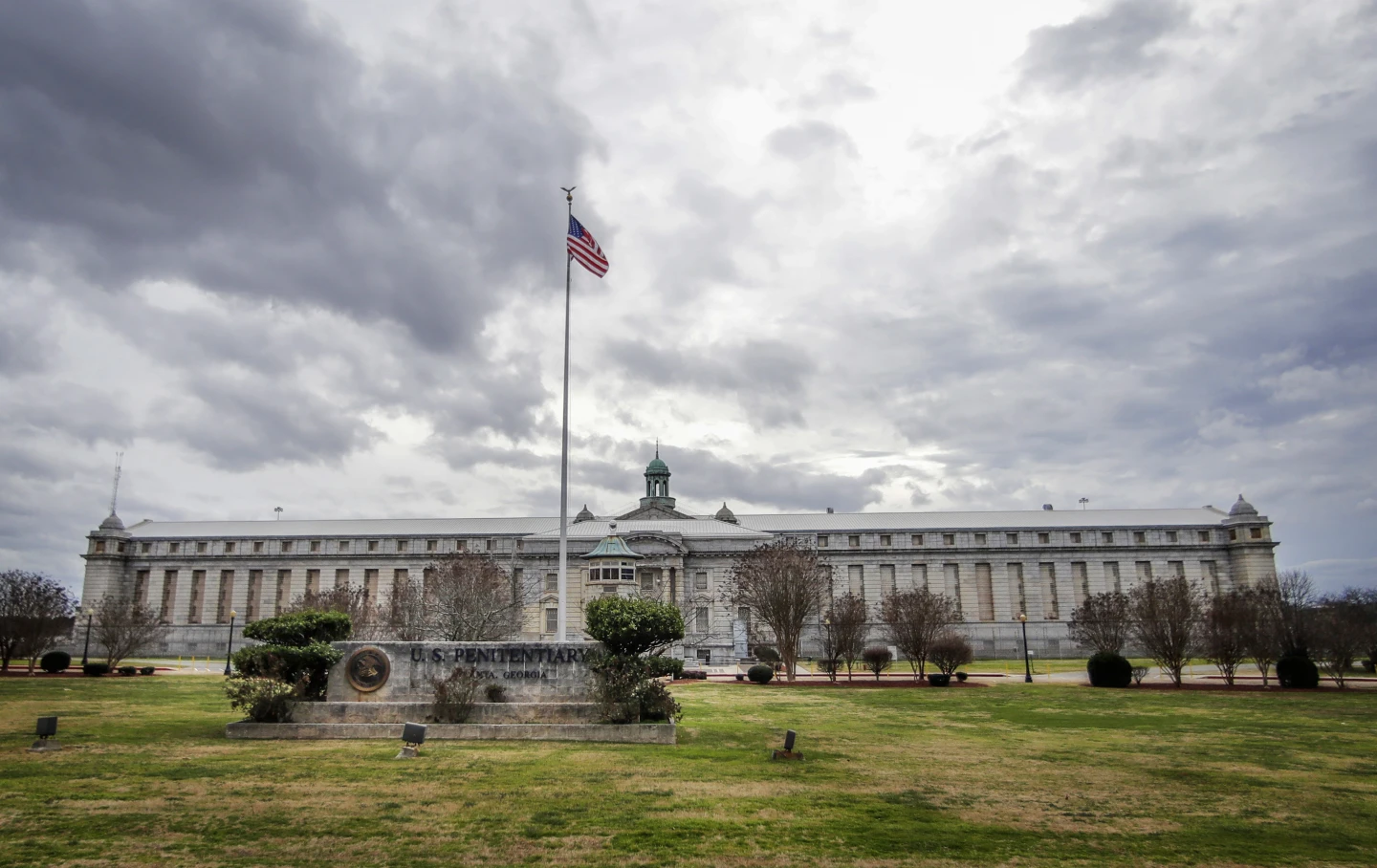NEW YORK (AP) — The U.S. government is using federal prisons to hold some people arrested in President Donald Trump’s immigration crackdown. The Bureau of Prisons confirmed this on Friday, returning to a method that was criticized during Trump’s first term for mistreating detainees.
In a statement, the Bureau of Prisons said it is helping U.S. Immigration and Customs Enforcement (ICE) by providing space for detainees. However, officials did not say how many people were being held or which prisons were being used.
“For privacy, safety, and security reasons, we do not share details about individuals’ legal status or the exact locations where they are held,” the agency stated.
However, three people familiar with the situation told the Associated Press (AP) that federal jails in Los Angeles, Miami, and Philadelphia, as well as prisons in Atlanta, Leavenworth (Kansas), and Berlin (New Hampshire), are being used. They spoke anonymously because they were not authorized to share this information. The Miami jail alone is expected to take in up to 500 detainees.
Overcrowding Concerns
Bringing immigration detainees into federal prisons could add more pressure to an already troubled system. Reports have shown that the Bureau of Prisons is dealing with severe staff shortages, violence, and other serious problems. To handle the extra detainees, prison officials are moving employees from other facilities temporarily.
The Bureau of Prisons is the largest agency in the Justice Department, with over 30,000 employees, 122 facilities, 155,000 inmates, and an annual budget of about $8 billion. In December, officials announced they would close one prison and reduce operations at six others due to budget issues and staff shortages.
ICE has the budget to detain about 41,000 people at a time, but Trump has promised to deport millions of undocumented immigrants. Many detainees are typically sent to ICE detention centers, private facilities, or local jails that have contracts with ICE. However, the administration has not said how many detention spaces it needs to reach its goals.
Guantanamo Bay and Legal Concerns
Homeland Security Secretary Kristi Noem said on Thursday that a second plane carrying detainees landed at the Guantanamo Bay Naval Base in Cuba. Immigration rights groups are demanding access to these detainees and argue that the base should not be used as a “legal black hole” where people have fewer rights.
White House Press Secretary Karoline Leavitt said on Wednesday that since Trump took office on January 20, more than 8,000 people have been arrested in immigration raids. Of those, 461 were released for medical reasons or because there was no space to hold them.
During the last week of January, ICE arrested an average of 787 people per day, much higher than the 311-per-day average during former President Joe Biden’s administration. ICE has since stopped releasing daily arrest numbers.
History of Using Federal Prisons for Immigration Detention
This is not the first time federal prisons have been used for immigration detainees. In 2018, during Trump’s first term, the Bureau of Prisons made a deal with ICE and Customs and Border Protection to hold up to 1,600 immigrants in federal prisons in Arizona, California, Oregon, Washington, and Texas.
Six asylum seekers held in a federal prison in Victorville, California, later sued Trump and several officials, claiming they were treated unfairly. They said they were given spoiled food, prevented from practicing their religion, allowed little time outside, and denied proper medical care.
The American Civil Liberties Union (ACLU) is currently suing the Bureau of Prisons and ICE to obtain records on the use of federal prisons for immigration detention. A court conference on the case is scheduled for February 28.
El Salvador’s Offer to Take U.S. Detainees
Last week, El Salvador’s President Nayib Bukele offered to take in U.S. immigration detainees and other prisoners at his country’s massive CECOT prison. He even suggested accepting U.S. citizens and legal residents for a “relatively low” fee.
Trump said he was open to the idea but admitted there could be legal issues.
“If we had the legal right to do it, I would do it in a heartbeat,” Trump told reporters on Tuesday. “We’re looking into it now.”


